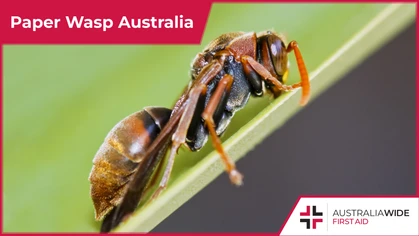The White Lipped Snake of Tasmania

Bites and Stings

The White lipped snake is one of only three snake species found in Tasmania. They can thrive in cold environments due to their small size and dark colouration. They also happen to be a venomous member of the Elapidae family of snakes, of which the Eastern brown is also a member.
The White lipped snake (Drysdalia coronoides) is a small species of snake found in Tasmania. Due to their small size, they can heat up quickly and thrive in some of Australia's coldest environments, including above the snow line on Mount Kosciuszko. And though they might look cute and cuddly, they are a venomous snake belonging to the Elapidae family, of which the Eastern brown is also a member. This article will help you become better acquainted with the White lipped snake and how to treat their bites. For hands-on experience with managing snake bites, enrol in one of our general or childcare first aid courses: We have training locations in Tasmania and in every other state, capital city, and major town throughout Australia.Appearance
Also known as a Whip snake, the White lipped snake has the following identifying characteristics:- A slender body that reaches only about 40 cm in length
- The scales on their back and side tend to range in colour from dark olive green to green-grey, while the scales on their belly are generally pale grey
- As their name suggests, a white line runs along their upper lip - the white line, itself, is bordered above by a narrow black line
Distribution and Habits
One of Australia's most cold-tolerant snakes, this species can be found in south-eastern parts of the mainland as well as Tasmania. They generally shelter beneath rocks, logs, and other ground debris in the following habitats:- Heaths
- Grasslands
- Woodlands
- Sclerophyll forests
Danger
Though this species is venomous, they are not considered highly dangerous to humans, as they:- Are shy and tend to hide when threatened
- Have small fangs and venom glands
Final thoughts
It is important to remember, snakes will never go out of their way to attack you. To avoid a snake bite, never attempt to approach, capture, or kill a snake at home or in the wild. If you need a snake relocated from your home, contact a professional snake catcher, instead. For hands-on experience with managing snake bites, enrol in one of our a href="https://www.australiawidefirstaid.com.au/courses/first-aid?utm_source=website&utm_medium=article&utm_campaign=white+lipped+snake">general or childcare first aid courses. We have training locations in Tasmania and in every other state, capital city, and major town throughout Australia.
Originally published at
https://www.australiawidefirstaid.com.au/resources/white-lipped-snake
as part of the Australia Wide First Aid Articles Library









